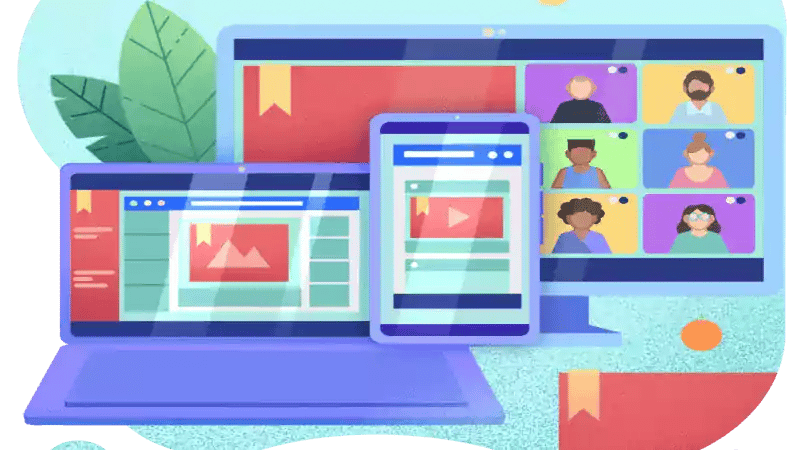I Have Enough Blog Content. Do I?
You have your website and a robust list of email contacts. You're updating your blog a couple of times per week with the quality content you feel confident will generate leads that will ultimately translate into sales. Are you getting the traction you want? How do you start generating leads?

Your marketing team has developed a monthly editorial calendar of dynamic content pieces to ensure appropriate messaging both in terms of tone and timing. Still, now a whole slew of questions arise:
-
How much content is enough content?
-
How often should you post?
-
Can you ever really have enough content?
-
How do you know when you have enough content to continually entice new customers through the sales funnel?
These are not only good questions blogging pros ask but also common questions within the management team of any business or organization. As companies assess their digital assets and the resources and tools they have on hand, they'll need to ensure those assets remain productive and effective in generating new leads, converting sales, and growing their pipeline of contacts.
Nebulous as these questions may seem, organizations can use some critical guidelines or signposts to understand when they have enough content and how they should approach and leverage it to help grow, develop, and meet their business goals.
Why blogging matters
Before we discuss a couple of ways to evaluate when you have enough or at least an adequate amount of Inbound Marketing content, let's take a moment to recap why you're blogging in the first place quickly. This brief refresher discussion will help us better answer the content quantity questions in a few moments.
Blog posts with more words tend to rank higher in search results.
Looking for the ideal blog post length, blog posts with 1,500-2,000 words ranked higher in search results than those with fewer words. Longer blog posts with relevant content provide more information to search engines, which helps them understand what the blog post is about. [HubSpot]
Blog posts with images and videos get more views.
Blog posts with images received 94% more views than those without images. Images and videos can help to break up text and make blog posts more visually appealing. They can also help to convey information more effectively than text alone. [Social Media Examiner]
Blog posts that are published regularly tend to attract more readers.
Businesses that published blog posts at least once per week saw a 30% increase in website traffic. Regular blog posts help keep your website fresh and up-to-date, making it more likely that people will visit your site. [Buffer]
Blog posts that are optimized for search engines tend to get more traffic.
Blog posts optimized for search engines received 55% more traffic than those not optimized. Search engine optimization (SEO) helps improve your blog posts' ranking in search results, making it more likely that people will find your blog. [MOZ]
Blog posts relevant to your target audience tend to get more shares.
Blog posts relevant to the reader's interests were more likely to be shared on social media. People are more likely to share content that they find interesting and valuable. [HubSpot]
Content marketing has two primary functions for your organization: creating a footprint within your industry and helping to drive new potential customers to your digital front door: organic traffic and brand awareness. Organic traffic and brand awareness work together to create a robust pipeline of customer interest.
However, it's still essential to understand how they function separately to realize how they work in a concert entirely:
Organic traffic
The number of visitors who find and explore your blog (and website) through search terms via Google or other search engines. Content marketing gets you in the organic traffic game by establishing a digital presence for your company and your products that customers can easily find without knowing who you are or what you're about. This is perhaps the main reason you're engaged in Inbound Marketing: allowing your company or products to be found without the customer knowing precisely how to find you.
Brand awareness
The opportunity for organic traffic to position your company or products as the most advantageous in your industry. While every blog post is more or less another door for a potential lead to walk through to learn more about your organization and products/services, it's critical to remember this. Each blog post also serves as an opportunity to highlight elements of your brand that will most impact potential customers and keep you at the top of mind when the customer has weighed their options and is ready to decide on the product or solution that best fits their needs.
As part of supporting your brand, content enhances your interactions with prospects and customers alike, whether you want to generate more traction for your law firm, provide additional clarity to complex cybersecurity concepts, or tell the story about your launching your retail business.
While this concept may appear rudimentary, it is often the fundamental element that gets overlooked as we navigate through more intricate processes or challenges. By keeping in mind the core purpose of engaging in Inbound Marketing, clarifying the question of how much content is 'sufficient' becomes more transparent and easily comprehensible.
Appeals to different buyer personas
Perhaps one of the more tried and true benchmarks for realizing when you have enough Inbound Marketing content is whether you can appeal to each buyer persona within your sales pipeline. Not to be too reductive, but quality content marketing that moves the needle regarding leads-to-sales hinges upon two important principles: audience and purpose. In this case, understanding the variety of audiences, you're appealing to and catering content to ensure each can be entered into an insightful, informative conversation regarding your product or service is critical.
As such, it's essential to ensure that your arsenal of Inbound Marketing content is equipped to handle every buyer persona within your sales pipeline and that your content calendar reflects that by showcasing the most relevant content to each buyer persona given the appropriate context. For example, suppose you know a sales lead is coming up at the end of their fiscal year, and you have content catered to accounting executives that will help them better reconcile their end-of-year tasks. In that case, it makes sense to publish that content when such a topic is at the top of your mind.
You speak to a family member differently than you speak with a business partner. Creating content that functions on the same principles for individual buyer personas will help foster lasting, productive relationships in business, just like in life.
Stages of the buyer's journey
Just like how each buyer persona in your pipeline necessitates differences in your Inbound Marketing content, the same goes for each stage of the overall buyer's journey – which, looking back to the beginning of this blog, is connected to organic search traffic.
For example, a manager at the beginning of the buyer's journey is often at the exploratory stage of a product or service. At this point, the executive is looking to understand the basics of a product or service or to better realize how it can help overcome a challenge or hurdle in their business. They're not looking to understand the ins and outs of implementation or an in-depth analysis of how this product or solution operates on a super micro level. Cliché as it sounds, they're looking for the 40,000-foot view of how this can help their company work harder and smarter.
Conversely, a supply chain logistics manager tasked with presenting a detailed recommendation for a product or service to increase the efficiency of a company's overall value chain needs an in-depth, 360-degree view of a product or service to make the most informed recommendation possible.
These scenarios represent different stages in the buyer's journey and different personas. This should demonstrate how much Inbound Marketing content management is connected and synchronized. As such, judging the quantity of content should reflect whether you have the right messaging for each stage of this journey.
Realizing whether you're at this point with your content creation or not points us back to organic search traffic. Understanding the critical search terms, ideas, or keywords used during different stages of the buyer's journey will help you best evaluate whether your stockpile of content can appeal to those from the exploratory to purchasing stage of the buyer's journey.
The power of use cases
The proof is in the pudding. Somewhat muddled meaning aside, this adage is something any effective Inbound Marketing strategy needs to incorporate when considering how best to motivate potential customers to pull the proverbial trigger—exploratory or introductory content to understand a problem and the solution provided on a macro level one component. A detailed discussion of how a product or service overcomes a specific challenge is another, and documented proof of concepts from current or previous customers is another critical marker of when you have enough content.
Companies are often so focused on reaching new customers, closing the deal, and continuing to grow their customer base that showcasing how customers deployed a product or service to improve the quality of their operations ultimately can be overlooked. This is where the value proposition for use cases as part of your Inbound Marketing content strategy can pay dividends when it comes to furthering the discussion with potential customers or answering that all-important question: "Does this product or solution help my business in the end?"
Quantification guidance
Some rules of thumb we've been observing in countless blog, SEO, and topic cluster implementations:
-
It takes about 20 blog posts plus a pillar page in a topic cluster to establish authority for a given topic.
-
Allocate about 60% to awareness, 30% to consideration, and 10% to the decision-marketing stage.
-
Have one piece of gated content for each stage of the buyer's journey.
-
Have 1-2 email nurturing campaigns to guide the buyer's journey.
Should I Plan a Weekly or Monthly Number of Posts?
As you're considering the ideal number of blog posts, you might be wondering whether you should measure weekly or monthly.
Posting every week shows that you're engaged in the field and keeping your content fresh. Having weekly posts does not necessarily mean that you'll need to create a particular number of content pieces every week; however, If you develop a blogging calendar up front, you can create a backlog of posts that can allow you to schedule blogs to go live on certain days of the week.
Regarding the number of monthly posts, Hubspot reports that blogs publishing 16 or more posts per month tend to get about 3.5 times as much traffic as blogs that only post about four blogs per month. If you think about those numbers in a weekly format, the data says that you'll need to post more than one blog per week if you want to drive traffic to your site and, optimally, that you'll need to post four or more blogs per week to get the maximum amount of traffic.
Yet even if you can't commit to four posts per week, Hubspot data suggests that more than one post per week is better than just one post per week.
Blogs with ten or more monthly posts see at least three times as much traffic as blogs with only one or two monthly posts.
You should be thinking about the total number of monthly posts and aiming for 12-16 per month if possible. Still, you should also design your blogging calendar so that material is posted weekly or at least regularly.
HubSpot gives additional guidance on posting, depending on the marketing objective:
.png?width=800&height=600&name=Copy%20of%20Comparison%20Chart%20Template%20--%20Blog%20Team%20(2).png)
Your objective should be to get to 20,000+ website visitors per month to trigger an initial stream of inbound leads and 100,000+ per month to see a steady stream of revenue transactions.
Being able to sufficiently and holistically answer questions from potential customers and offering the real-world implications of how your product or service positively impacted like-minded companies or those struggling with similar challenges is a good indicator that you have the right content to motivate customers to cross that sales finish line.
This content is also available in:
- German: Ich habe genug Blog-Inhalte. Wirklich?
- Spanish: ¿Cuánto contenido necesita tu blog para atraer clientes?
- French: Le contenu de mon blog est suffisant. Est-ce le cas ?
- Italian: Ottimizzare il Blog: Quanti Contenuti sono Abbastanza?
- Romanian: Cât de mult conținut este suficient pentru blogul tău?
- Chinese: 我有足够的博客内容。我有吗?











Leave a Comment